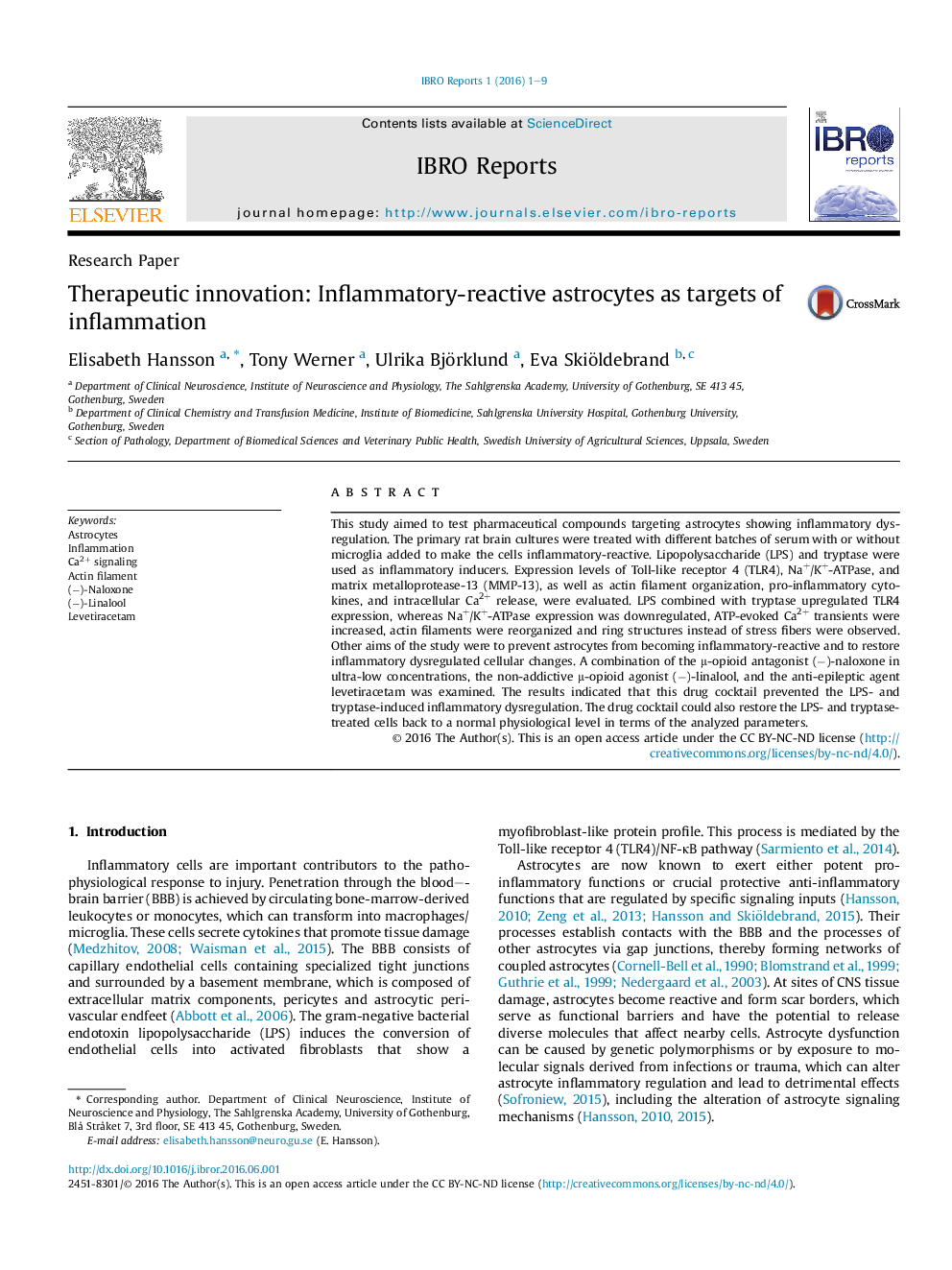| Article ID | Journal | Published Year | Pages | File Type |
|---|---|---|---|---|
| 4320457 | IBRO Reports | 2016 | 9 Pages |
•New combinations of pharmaceutical compounds can resolve and restore disordered cellular inflammatory pathways in network coupled cells.•Gap junctions coupled cells may be targets of inflammation.•The new combination has been tested using in vitro networks of astrocytes.•Clinical consequences of chronic inflammation in one or several organs are increased risks for co-morbidity seen in several diseases.
This study aimed to test pharmaceutical compounds targeting astrocytes showing inflammatory dysregulation. The primary rat brain cultures were treated with different batches of serum with or without microglia added to make the cells inflammatory-reactive. Lipopolysaccharide (LPS) and tryptase were used as inflammatory inducers. Expression levels of Toll-like receptor 4 (TLR4), Na+/K+-ATPase, and matrix metalloprotease-13 (MMP-13), as well as actin filament organization, pro-inflammatory cytokines, and intracellular Ca2+ release, were evaluated. LPS combined with tryptase upregulated TLR4 expression, whereas Na+/K+-ATPase expression was downregulated, ATP-evoked Ca2+ transients were increased, actin filaments were reorganized and ring structures instead of stress fibers were observed. Other aims of the study were to prevent astrocytes from becoming inflammatory-reactive and to restore inflammatory dysregulated cellular changes. A combination of the μ-opioid antagonist (−)-naloxone in ultra-low concentrations, the non-addictive μ-opioid agonist (−)-linalool, and the anti-epileptic agent levetiracetam was examined. The results indicated that this drug cocktail prevented the LPS- and tryptase-induced inflammatory dysregulation. The drug cocktail could also restore the LPS- and tryptase-treated cells back to a normal physiological level in terms of the analyzed parameters.
